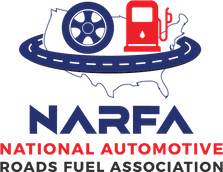In our Workers Compensation Program, the Automotive Industries Compensation Corporation (AICC), driving on public roads and highways is a significant exposure within the members’ operations. OSHA (Occupational Safety and Health Administration) reports that year after year, vehicle accidents are the leading cause of worker fatalities
Defensive driving goes well beyond the basics of motor vehicle operation on public thoroughfares. Defensive driving is the knowledge of avoiding accidents even under adverse environmental surroundings and behavior of other drivers. Management needs to educate drivers on defensive techniques including proper use of mirrors, headlights, seatbelts, and any special equipment (e.g. anti-lock brakes) that the company vehicle may have.
Stay Focused
Driver distractions are a leading cause of motor vehicle accidents. Management should have policies that restrict drivers from using cell phones, text messaging and a host of other activities while driving. There is no research that supports the position that Bluetooth and other similar devices significantly reduce accidents. With the multiple tasks a safe driver must constantly be applying such as checking mirrors, speed limits, road conditions, and traffic around them, the driver’s focus must be maintained on operating the vehicle only.
Be Alert
Company policy should state that driving under the influence of drugs or alcohol is strictly prohibited. Reaction time and vision are affected to some degree and even prescription drugs can have this effect. Company drivers need to take driving a company vehicle as a serious responsibility. This includes proper rest. Lack of sleep and feeling tired also cuts down reaction time and drivers that push themselves to continue to drive even when tired are a major cause of vehicle crashes.
Watch Out For Other Drivers
We can not control the behavior of other drivers on the road. The view outside the vehicle windows and within the drivers’ mirrors is constantly changing. Potential problems and objects to be observed come in and out of view in an instant. By scanning all areas utilizing mirrors and windows, a defensive driver can take the necessary steps to avoid potential danger by adjusting speed, changing lanes, and give themselves a way out.
Follow the Three (3) Second Rule
When following other vehicles pick a stationary object ahead (e.g. speed sign, mileage markers). As soon as the person in front of you passes the object begin counting “one-one- thousand, two-one-thousand, and three-one thousand.” If your vehicle reaches the object before you finish reaching three seconds, you are following to close. Back off and allow yourself an out should the other guy have to stop, has a blowout, or any other event. In inclement weather increase the distance by 50% (rain), 2X (snow), and 3X (ice).
Watch Your Speed
Company policy should state that operating a company vehicle over the speed limit is strictly prohibited Posted speed limits are suggested for ideal conditions only. In rain, snow, or operating in construction zones, it is important to slow down. Expect other drivers not to follow these safe driving techniques.
Our Loss Control Representative can conduct “Defensive Driving Seminar” upon members’ request. The seminar runs one (1) hour utilizing a program from the National Safety Council.
AICC Members enjoy a number of benefits. The AICC provides members with proactive claims management, unlimited loss control services, lower premiums, and even dividends paid back to members. Since 1995, the AICC has been recognized nationally as one of the best workers compensation programs in the market. Contact us to learn more about how you can join our select group!
Recent Posts
The U.S. Department of Labor Announces Proposed Rule To Protect Indoor, Outdoor Workers From Extreme Heat
The U.S. Department of Labor has proposed a new rule aimed at protecting workers from extreme heat hazards. This initiative seeks to safeguard approximately 36 [...]
Supreme Court Overturns Chevron Deference: What It Means for Workplace Safety and Regulation
The landscape of federal regulation is set for a seismic shift following a recent Supreme Court decision. On June 28, in Loper Bright Enterprises, et [...]
Navigating the Compliance Maze: How NARFA Simplifies Employee Benefits for Automotive and Trade Industries
In today's complex regulatory environment, businesses in the automotive, roads, fuel, and related industries face unprecedented challenges in managing employee benefits. Recent studies show that [...]




